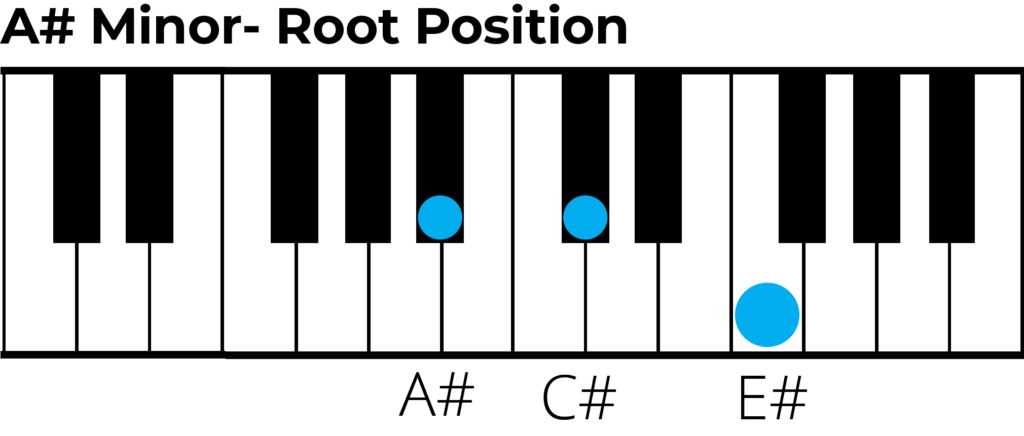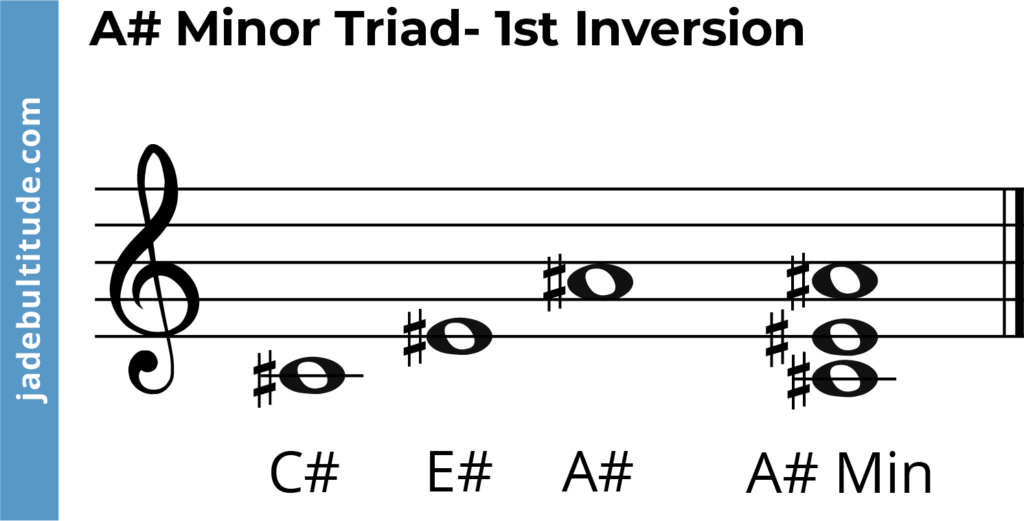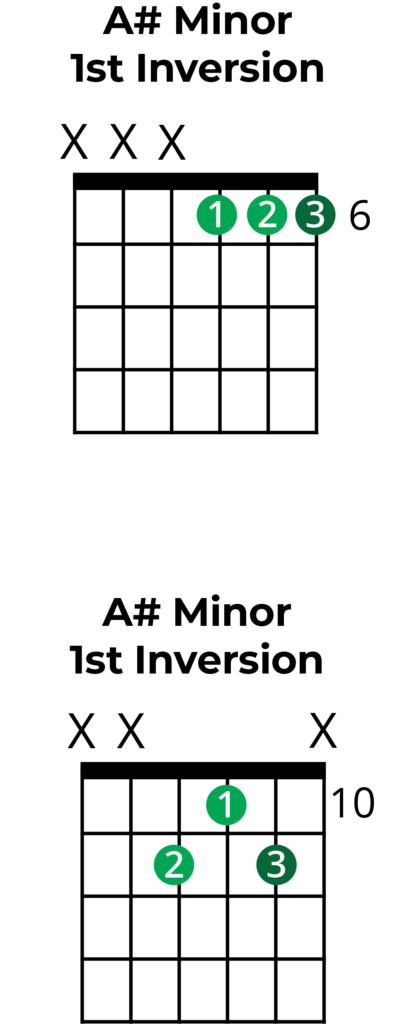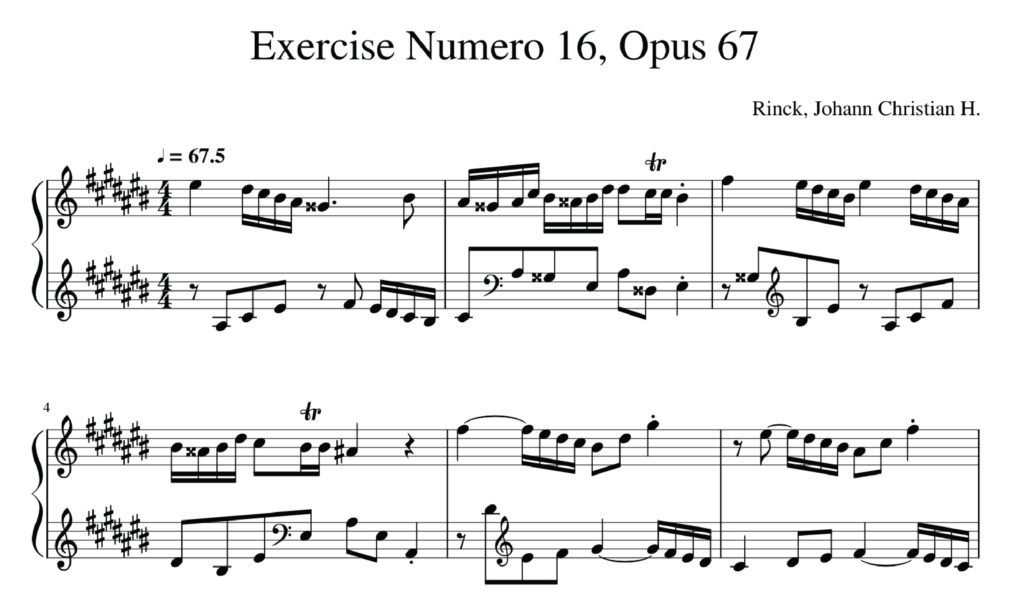In this article you’ll learn how to construct the A sharp minor triad as well as how to play it on piano and guitar.
We’ve also included sections on inversions for those that want a deeper understanding. Lastly, listen to some examples of popular songs that featured this triad.
Root, 3rd and 5th
The A sharp minor triad is formed of the 1st, flat 3rd and flat 5th of the A sharp major scale.
- A# – root note
- C# – minor 3rd above the root
- E# – perfect 5th above the root
Here is the triad written on the stave in the treble and bass clef.


Before you read on make sure that you have a basic understanding of intervals. Intervals are vital for understanding how triads are built. Check out our guide to major, minor and perfect intervals for more on this.
A sharp Minor Triad on Piano
his pattern of notes could also be played starting on any A sharp note.
However, the order of the notes must be the same:
- A sharp – lowest note
- C sharp – middle note
- E sharp – highest note
This is called ‘root position’.

A# Minor Triad on Guitar
There are two simple positions that you can use to play an A sharp minor chord on guitar. Both positions can also be slide up or down the neck to play different minor triads.

1st Inversion
A 1st inversion is where we take a triad but we start on the second note, which in this case is C#. We still keep the E# above, but then the A# (or root) become the highest note.
This way of rearranging a triad gives us a different sound as the relative pitches of the three notes has changed.
- C sharp – lowest note
- E sharp – middle note
- A sharp – highest note

1st inversion on Piano
On the piano we can play the 1st inversion of an A# Minor triad by starting on a C#. They play the E# above and the A# above this.

1st Inversion on Guitar
Below are the most common shapes for playing an A sharp minor chord in the 1st inversion. Remember that we can only use certain shapes are the pitches of the three notes are important.

2nd Inversion
A 2nd inversion is where we take a triad but we start on the third note, which in this case is E#. We still keep the A# above this as we did from the 1st inversion. Then the C# becomes the highest note in the chord.
- E# – perfect 5th (lowest note)
- A# – root note (middle note)
- C# – minor 3rd (highest note)
We could construct a 2nd inversion starting on any E# note in any octave. The only thing that must stay the same is that the we use the A# above and the C# above that.

2nd inversion on Piano
On the piano we can play the 2nd inversion of an A sharp Min triad by starting on an E#. They play the A# above and the C# above this.

2nd Inversion on Guitar
Below are the most common shapes for playing an A sharp min triad in the 2nd inversion. Remember that we can only use certain shapes are the pitches of the three notes are important.

Triads from the A sharp Minor Scale
By looking at the A sharp Minor scale we can actually make triads built on each note and only using notes from A sharp minor. Below you can see a list of each triad we will create be starting on different notes of the scale.
- A# Minor
- B# Dim
- C# Major
- D# Minor
- E# Minor
- F# Major
- G Major

Pieces in A sharp Minor
Due to its very awkward key signature (7 sharps), pieces are rarely written in the key of A sharp Minor. Composers often use B flat minor (5 flats), which is enharmonically equivalent to A# Minor.
However, this didn’t stop some composers from using this usual key.
In Christian Heinrich Rinck’s 30 Preludes and Exercises, Prelude No. 16 is in A sharp minor.

In Bach’s Prelude and Fugue in C-sharp major, BWV 848, a section near the beginning modulates to A sharp minor (the relative minor of C sharp major).
What’s next….?
- Learn how to construct the A sharp Major triad
- Swat up on your chord knowledge with our complete guide to chords.
